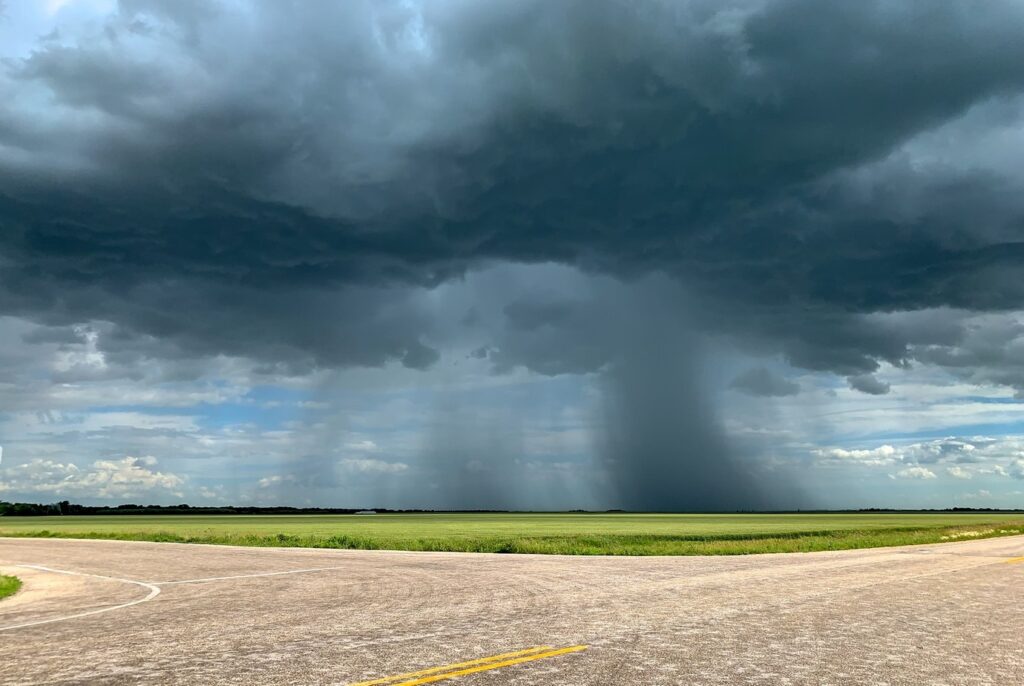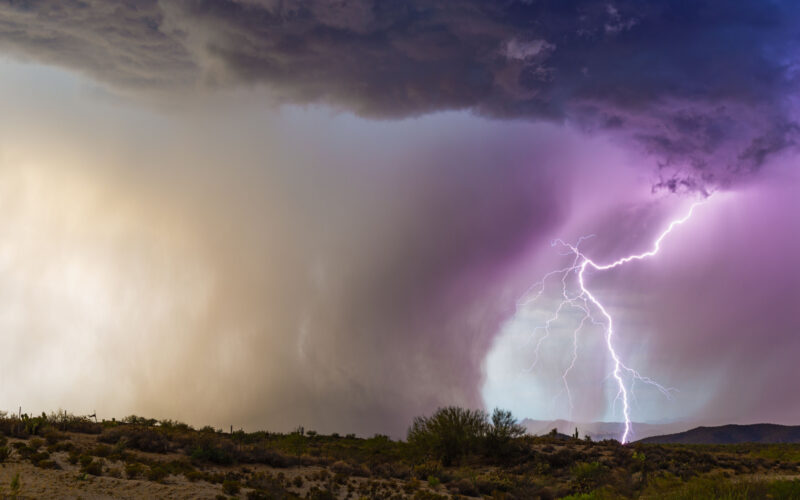What is a microburst?
A microburst is a weather phenomenon that can pose a significant danger to aircraft during takeoff and landing, as well as impact on general aviation safety in general. A microburst is a sudden, powerful downdraft of air that occurs when a thunderstorm’s updraft reaches its maximum intensity and collapses. As the downdraft hits the ground, it spreads out in every direction, creating a burst of wind that can be incredibly strong and consequently difficult for aircraft to handle.
What are the main types of microbursts?
Wet microbursts occur when rain falls through a dry layer of air, causing the rain to evaporate rapidly and cool the air. This cooling effect makes the air become denser, and as a result it sinks rapidly towards the ground, creating a strong downdraft. The strength of the downdraft can be significant, reaching speeds of up to 150 mph.
The temperature and humidity of the air influence the formation of wet microbursts. For wet microbursts to form, the air needs to be dry at lower altitudes, and there must be a moist layer of air above it. Wet microbursts are most common in areas with low humidity, such as deserts.
On the other hand, dry microbursts occur when there is no rain and a column of sinking air that evaporation has cooled creates the downdraft. This type of microburst is typically more challenging to detect because there are no visible signs of precipitation. The sinking air creates a strong downdraft that can be as powerful as a wet microburst, reaching speeds up to 100 mph.
Dry microbursts are most common in areas with high humidity, where the evaporative cooling effect is more pronounced. They can be particularly dangerous because they are more difficult to detect and predict than wet microbursts.
What are the main stages microbursts go through?
The downburst stage is the first stage of a microburst, caused by a sudden descent of air towards the ground. During this stage, the descending air can reach speeds of up to 150 mph. The downburst stage is the most dangerous one for aircraft, because it can cause a sudden loss of altitude and airspeed. Pilots need to be especially vigilant during this stage and take quick action to maintain control of their aircraft.
The second stage of a microburst is the outburst stage. This occurs when the descending air hits the ground and spreads out in all directions, creating strong gusts of wind. It can produce gusts of wind of up to 45 knots, which can create severe turbulence and affect the stability of an aircraft. Pilots must be prepared to contend with strong gusts of wind during this stage and to take measures to maintain control of their aircraft.
The third and final stage of a microburst is the cushion stage. During this stage, the descending air rebounds back upward, creating turbulence. This can cause sudden changes in altitude and airspeed, which can be challenging for pilots to manage. Pilots must be alert during this stage and take necessary action to maintain a safe and stable flight path.

Dangers associated with microbursts and how pilots respond to them
Microbursts have the potential to be incredibly dangerous for aircraft. They create sudden, strong gusts of wind that can cause an aircraft to lose altitude rapidly, or even crash. The wind shear associated with microbursts may cause sudden changes in airspeed, which can be difficult for pilots to control. If they encountered a microburst during takeoff or landing, pilots might not have enough altitude or airspeed to recover, making it a critical situation.
To avoid the dangers of microbursts, pilots rely on weather radar and visual cues to detect potential areas of turbulence and avoid flying through them. Pilots are trained to react by increasing engine power, adjusting their flight path, and taking other evasive maneuvers to avoid the strong downdrafts involved. It is essential for pilots to receive proper training on microbursts to ensure they can react appropriately and safely in such a situation.
Aeromexico Flight 2431
On February 24, 2019, a tragic accident caused by a microburst occurred involving Aeromexico E190 flight 2431. It resulted in a loss of control by the pilots and ultimately a fatal crash. While the sudden downward wind from the microburst was a significant factor, it wasn’t the only cause. The pilots were also responsible for lacking situational awareness which contributed to the disastrous outcome.


